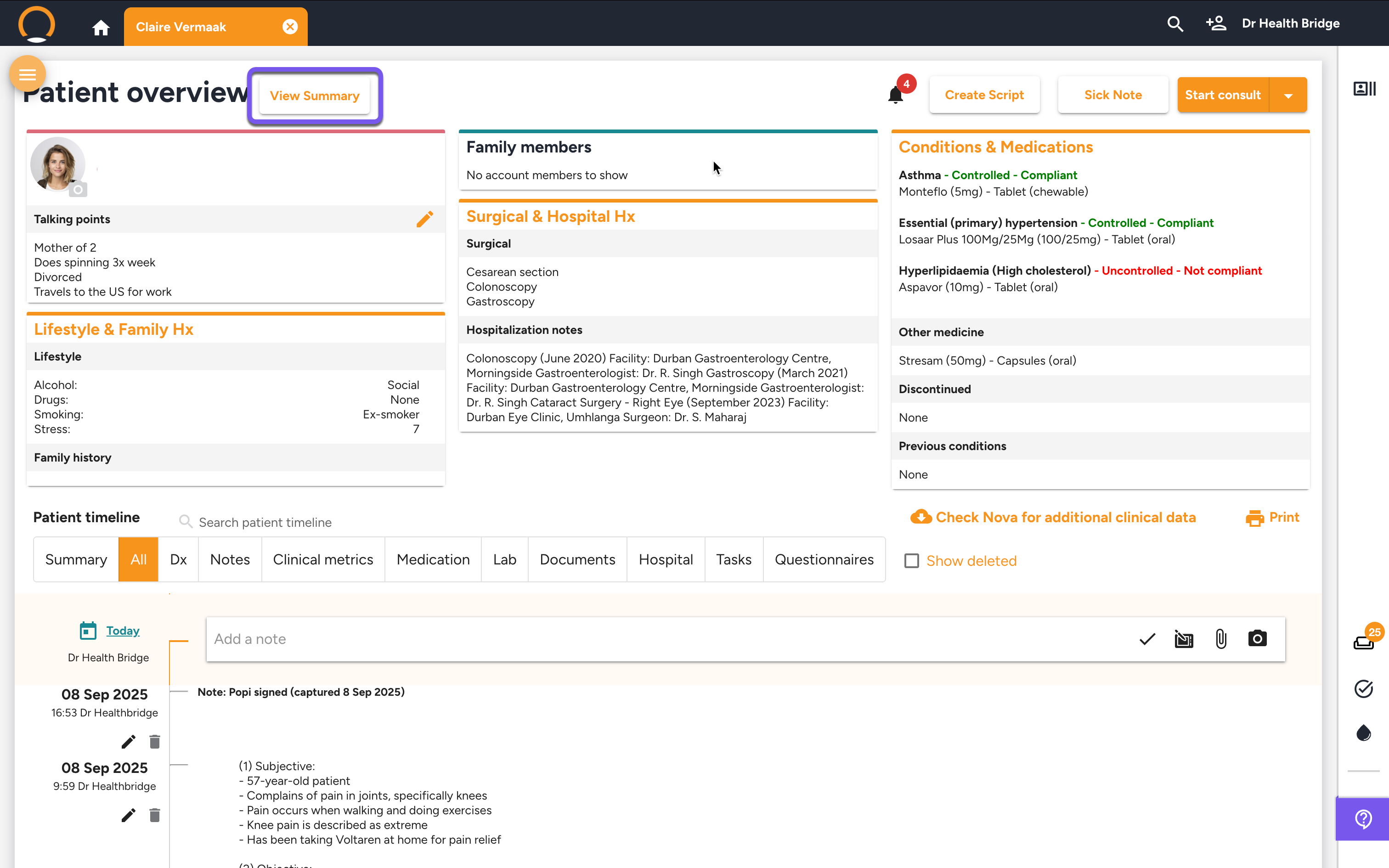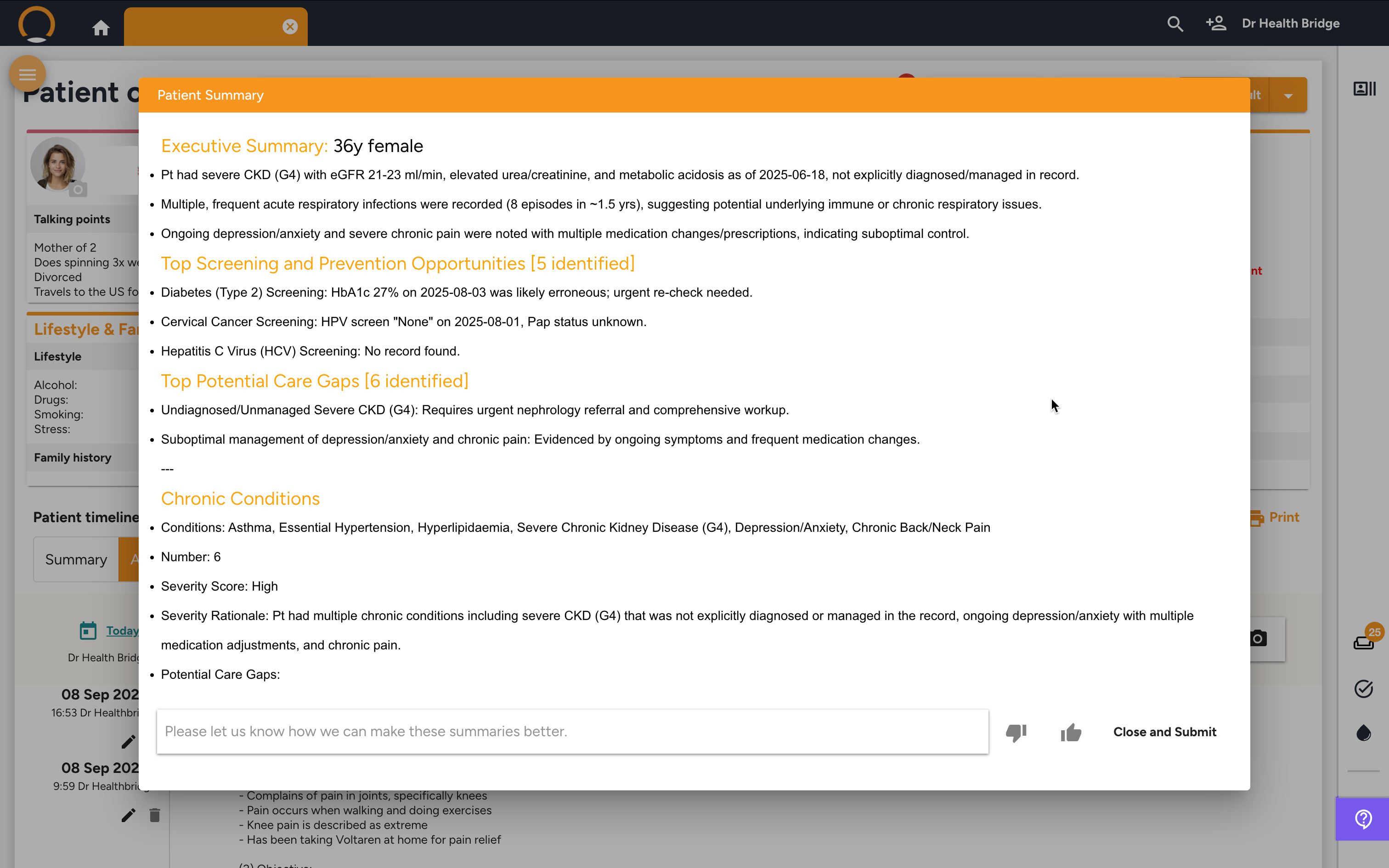Patient Summary
How to Use the Patient Summary
The Patient Summary is designed to be used before you start a consultation to quickly get up to speed.
Step 1: Open the Patient Overview
Access the patient's file from the Calendar, Waiting Room, or by using the Search Bar. This will take you to the main Patient Overview screen.
Step 2: Generate the Summary
At the top of the Patient Overview screen, next to the patient's name, you will see a "View Summary" button. Click this button to generate the summary.

Step 3: Review the AI-Generated Executive Summary
A pop-up window will appear, displaying the comprehensive executive summary. This includes several key sections:
Executive Summary: A top-line overview of the patient's current major health statuses.
Top Screening and Prevention Opportunities: Highlights any identified health screenings the patient may be due for.
Top Potential Care Gaps: Points out potential areas in the patient's ongoing care that may need attention or follow-up.
Chronic Conditions: Lists all recorded chronic conditions for a quick review.

Step 4: Take Action and Close
Use the insights from the summary to guide your preparation for the consultation. Once you have reviewed the information, click the "Close and Submit" button to close the window
Patient Summary - FAQ
Q: How up-to-date is the information in the Patient Summary? A: The summary is generated in real-time the moment you click the "View Summary" button. It analyzes the most current information available in Healthbridge Clinical, including the very latest lab results and consultation notes.
Q: Can I trust the summary for critical clinical decisions? A: It should be used as an expert executive overview to prepare you for a consultation. While it intelligently flags risks and identifies care gaps, every insight links directly back to the original entry in the patient's timeline, so you can quickly validate any piece of information before making a final clinical decision.
Q: How is this different from just reading the patient's timeline? A: The patient's timeline is a raw, chronological list of every event. The AI Patient Summary actively synthesizes and analyzes this data, identifying patterns, highlighting the most critical issues, and flagging potential care gaps that might be missed during a quick manual scan. It provides clinical insight, not just a list of information.
Q: What if I disagree with a "care gap" the AI has identified? A: The AI identifies potential gaps based on the recorded data. If you have determined a specific screening or follow-up is not clinically appropriate for that patient, you can simply disregard the suggestion. The summary is a tool to support your clinical judgment, not replace it.
